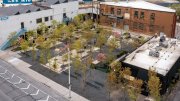While she was in Italy last summer as an architect-in-residence at the American Academy in Rome, landscape architect Julie Bargmann, M.L.A. ’87, skipped the international Biennale Architettura exhibition in Venice (despite being part of the United States pavilion’s design team) and instead visited her nephew’s farm, where she helped with a bit of land grading. “I do these tiny things on the side while I’m working on the giant monsters,” she explains.
Many of those “giant monsters” are disused industrial sites or abandoned urban spaces, which she reimagines as parks, gardens, residences, and offices. Bargmann heads the Virginia-based D.I.R.T. Studio (short for Dump It Right Here), which has won numerous awards since she founded it in 1992. Her design ethos relies on resourcefulness, incorporating demolition materials into the construction, as in the 2005 redevelopment of Philadelphia’s historic Navy Yard, which saw its last ship built in 1970 and closed in the 1990s.
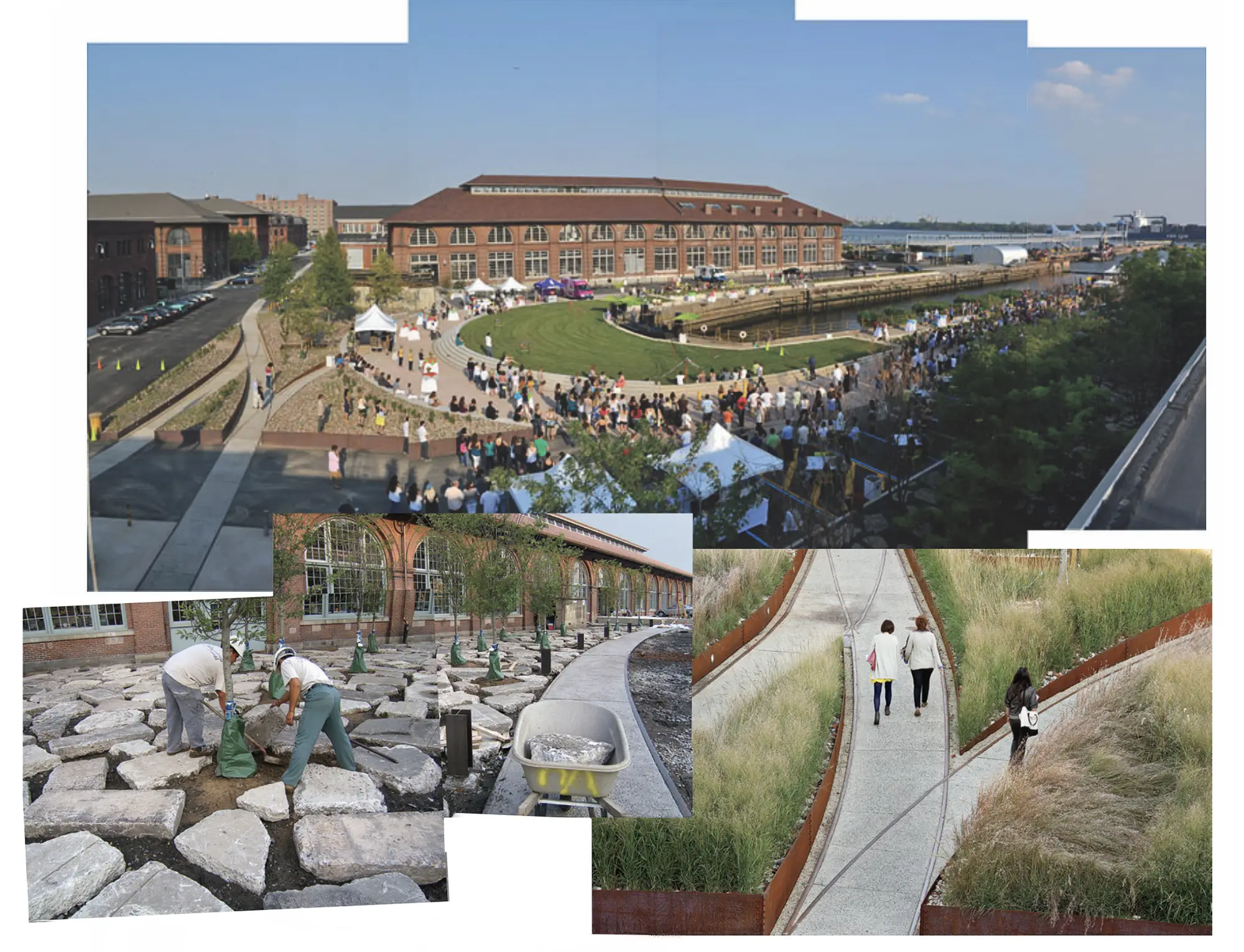
Under Bargmann’s eye, workers re-laid debris from demolition into patterns on the ground, using reclaimed steel walls to hem in native trees and grasses. The green space they created complements old rail lines that were left intact in the paths that led between the repurposed offices and studios.
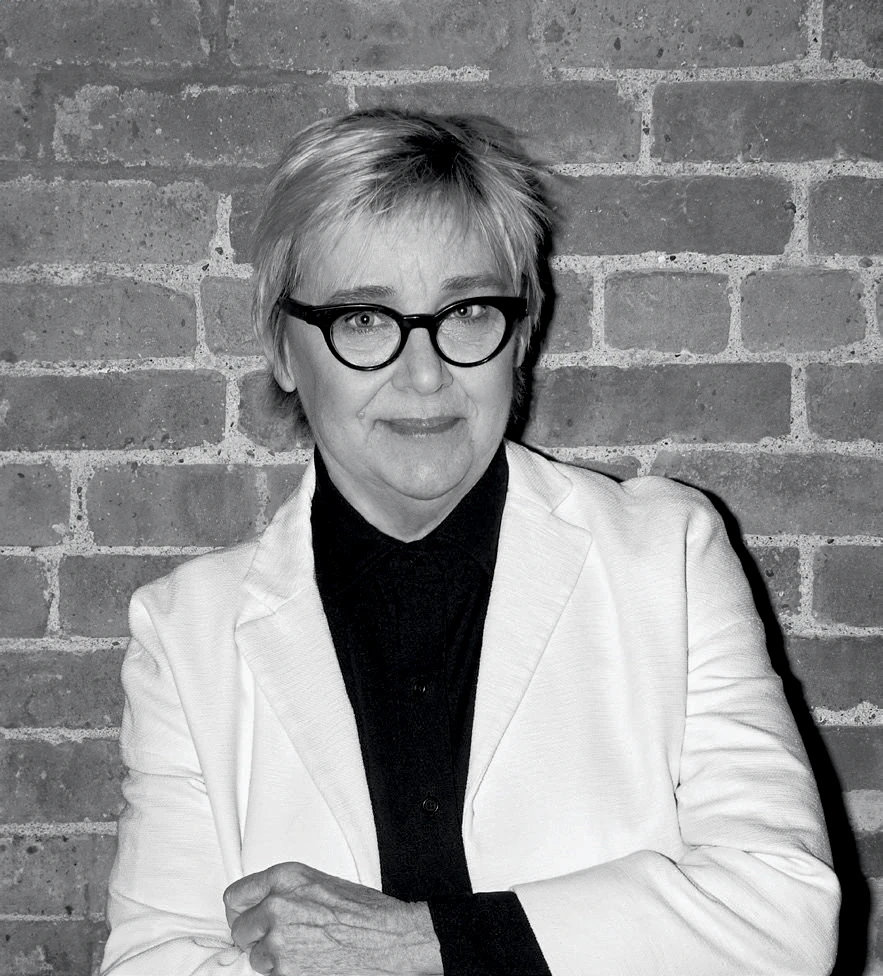
Bargmann’s affinity for a particular kind of industrial space began early. Growing up in New Jersey, she was fascinated by the behemoth New York refineries she and her family would drive past on the New Jersey Turnpike. Bargmann eventually studied landscape architecture at Harvard after getting her bachelor’s degree in sculpture from Carnegie Mellon University. After graduating, she took a teaching job in Minnesota, where, intrigued by the state’s famed Iron Range, she took a road trip to tour a mining site.
The experience galvanized her. Bargmann spent several months investigating different kinds of mines around the country, some defunct, others still working. She was piqued by the sites but also by the engineers, who seemed to be viewed as machinery themselves. “That’s when I started to be angry about how the mines and the people who worked there—past, present—were being treated,” she said in a 2021 interview with the Cultural Landscape Foundation, after the organization awarded her a major prize for her work.
One of Bargmann’s current monster projects is a minor league baseball park in Chattanooga, Tennessee, opening next spring as the home of the Lookouts, a Cincinnati Reds AA farm team. “It’s fascinating,” Bargmann says of the site. “It was an old pipe factory right on the river. The owner of the property luckily didn’t completely wipe it out, which usually is what happens. I usually only have the ground to work with.”
But with the Tennessee ballpark, she’s working with four abandoned structures from a former foundry site, “so the whole scheme revolves around this presence of time, and the cool juxtaposition of this new time melding with [the past]” she explains. The artist says the Chattanooga project has been a happy collaboration with the developers. At one of their first meetings, she recalls, she told them, “This is a pact that we’re making—not just a contract, but a pact about the site.” She dared them to reuse 100 percent of the material that they excavated for the new stadium. The developers agreed and achieved the goal.
For Bargmann, the difference between a contract and a pact involves mutual understanding about what she calls the story of the site, which she assembles by researching its cultural, historical, social, natural, and industrial aspects and by talking with people who have a stake in the place. That’s her process, whether she’s revitalizing a 1,200-acre Ford plant in Michigan or working on a landscape project with the Ute Mountain Ute Tribe in Colorado. “I think there’s a story in every single thing, in every single place,” she says.
Not every contractor she engages with wants to think about the project on that level. Sometimes when Bargmann shows them her renderings, aiming to start a conversation about the story of a site and what’s possible, she says, “They’ll just say, ‘Lady, we’re going to just build it the way you drew it.’”
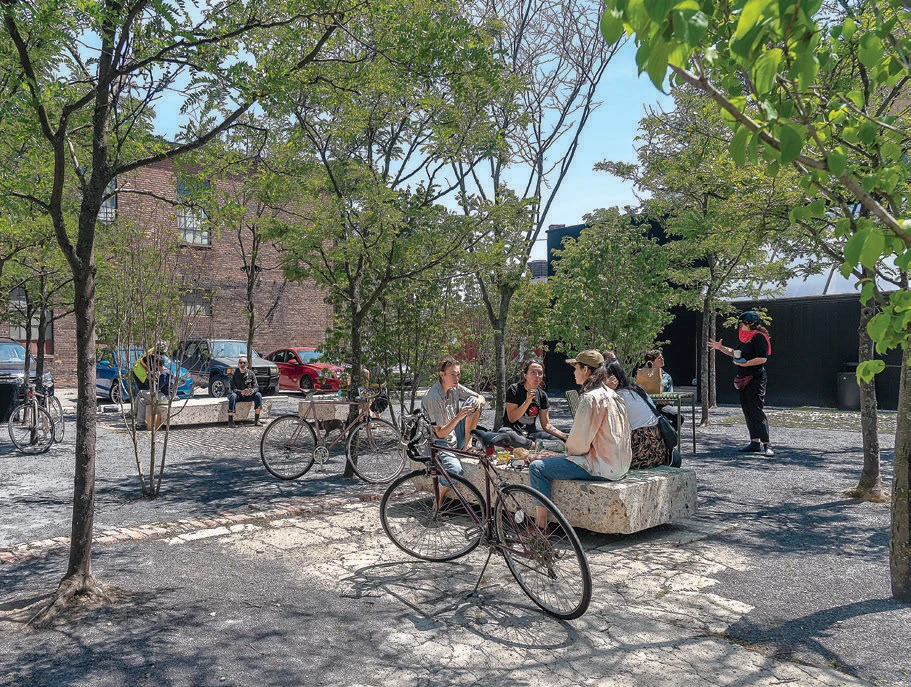
A Detroit project called Core City Park exemplified the kind of collaboration she seeks, one that doesn’t necessarily work linearly. The 2019 mission was to build a park on an abandoned parking lot where a fire station had once stood.
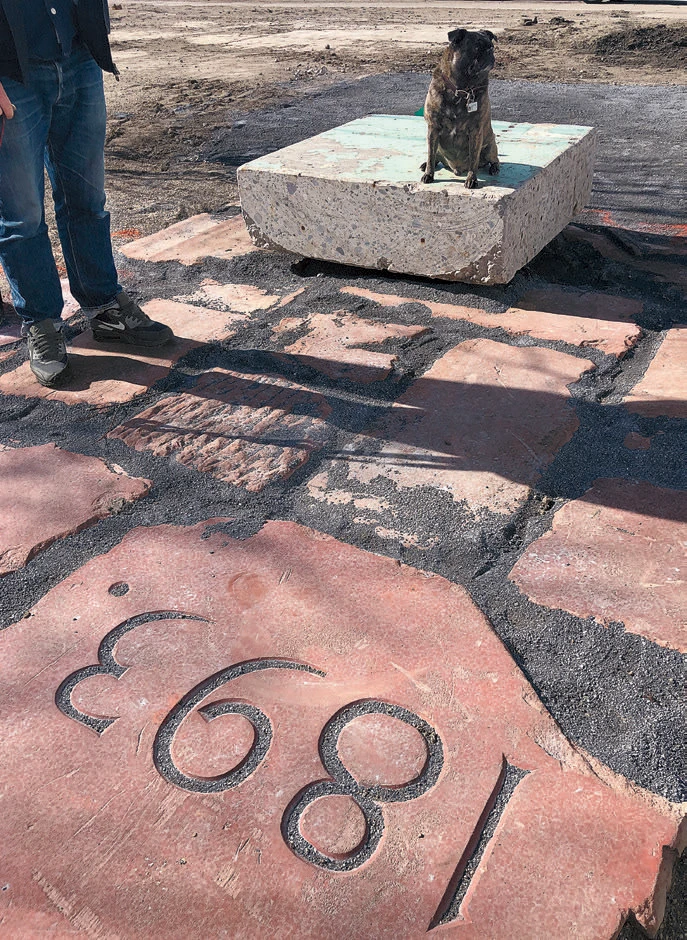
The team dug into the ground and discovered the firehouse’s cornerstone. They kept digging and bringing up debris. “With every piece, it was like, ‘Okay, I see you,’” Bargmann says. “I need to learn about you, you crazy-ass thing that just came out the ground. What do you want to be? Where should you be?”
With that project, Bargmann had to walk the line between authenticity and contrivance, which she says can sometimes tip into “ruin porn”—especially in a city like Detroit, which experienced decades of decay.
Instead, she designs with a form of restraint that she calls modesty. In Detroit, the team initially proposed a pedestal for the discovered cornerstone. Bargmann pointed to the ground instead: “I said, ‘I want it right there. I want people to step on it.’” And so, the red 1893 marker was laid in the park ground, which is mostly made up of crushed black slag, industrial runoff that is often mistakenly assumed to be toxic.
Through holes punched through the hard ground, honey locust and flowering dogwood trees blossom. In some places, excavated slabs of sandstone and brick are patchworked together to create terraces that invite guests to sit and have a coffee. But there are no obvious paths, and the concrete, slag, sandstone, and brick coexist but are not choreographed.
“‘Design’ is there: just find it,” Bargmann notes, a directive that feels both challenging and liberating. “I’m often trying to do this thing of: If there’s a new layer, how can it feel like it’s hugging the ground, just saying, ‘I like you’?” she says. “Some folks could be in the present and future, and then they look down and they’re in the past.”
